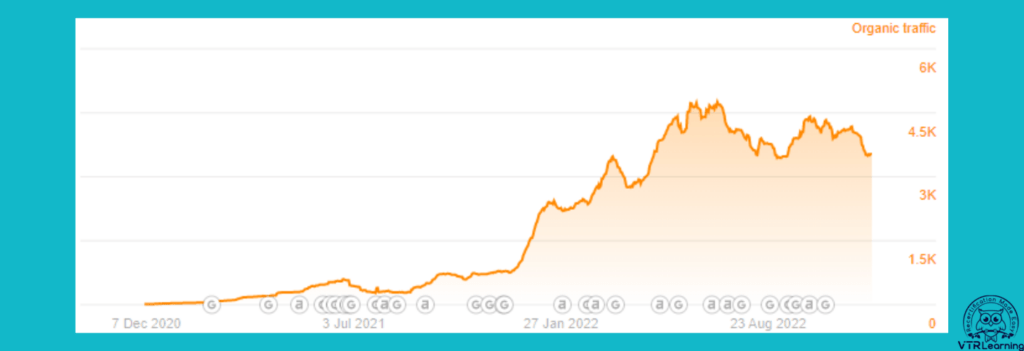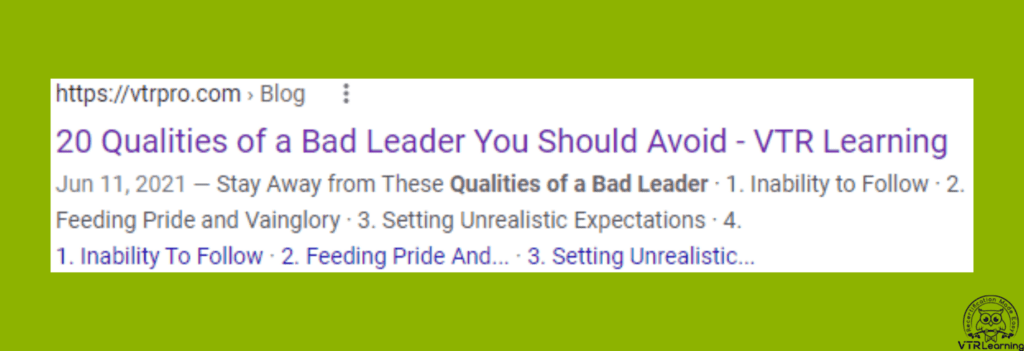
When someone feels they have a wealth of knowledge on a particular topic, blogging often represents an exciting opportunity. After all, it’s a relatively inexpensive way to make your voice heard – if done well. And moreover, in the modern business context, blogging isn’t only a great way to market your business, it’s essential.
In a sense, blogging is similar to the “Facebook official” test. Because the same way some businesses without social media accounts seem less than legitimate, so do those without blogs. Naturally, up-to-date writing let’s your audience know you’re still active and able to help solve their problems. Especially if your writing is already directing them toward beneficial solutions and fixes for their various issues.
Of course, this all requires a detailed, working knowledge of your own industry. That way, you make sure not to feed misinformation to readers who could potentially suffer as a result. But the overall effects of these efforts are often well-worth the time it takes to implement and maintain. After all, blogging is an easy and effective method to market your business. And it all begins with SEO – search engine optimization.
How Does SEO Help Market Your Business?
Before discussing how blogs ultimately help market your business online, you have to understand the basics of SEO. Search engine optimization refers to the process of optimizing content on a website so that it appears higher in rankings. And this revolves largely around keywords and phrases. For example, a well-optimized list of Star Wars characters might appear at the top of results for a search query like “most powerful Star Wars jedi”.
If you take the time to carefully craft a page, you most likely want other people to see it. And the best way for that to happen is by ranking at the top of search engine results pages (SERPs). According to a Backlinko study, nearly 55% of search traffic goes to the top three results. So, if your page isn’t ranking high on the first page of results, you likely won’t get nearly as much attention.
However, there’s much more than simply writing well-worded copy to consider when it comes to SEO. Unfortunately, Google safely guards the factors that it considers when ranking different pages. And this sometimes makes it somewhat difficult to know how to optimize sites and pages. However, despite algorithmic changes, we do know some ranking factors. According to Neil Patel, a huge name in SEO, these ranking signals include:
- Page Speed
- Content Relevance
- Site Design
- Link Quality
- Mobile-Friendliness
- HTTPS Status
- User Engagement
So, there are many factors beyond copywriting to consider with SEO. In fact, Google has an estimated two hundred ranking signals. Feasibly, it’s not always possible to address every single factor. And as a result, optimizers often must choose which to focus on.
Blogging and SEO Work Together to Increase Traffic
But what does all of this have to do with blogging? It’s pretty simple, actually. Blogging allows you to market your business by targeting important industry keywords and optimizing pages to rank as high in SERPs as possible. In other words, by creating high-quality site pages about key topics, your online visibility increases exponentially.
But don’t simply take our word for it. VTR Learning has had a blog since 2018, but we didn’t start focusing on keyword optimization and SEO until mid-2021. And since then, our regular traffic has increased significantly, even with several dips and rises.

Of course, from the image above, you should be able to tell that SEO represents more of a long-term game. And even once implemented correctly, it requires upkeep. Otherwise, your pages could become stale and suffer penalization. But what’s also clear is that the benefits of a strong SEO strategy are worth the time.
How to Write a Well-Optimized Blog to Market Your Business
We previously released an article that detailed how to write a blog. And while we stand by that perspective, it’s clear that the format it proposes doesn’t work well with SEO. In fact, it focused on more human elements like brainstorming and feedback. As a result, it spoke little to the technical side of writing, which is paramount for SEO.
Of course, that’s not to say the more humanistic elements of writing aren’t important to blogging that can market your business online. However, SEOs must remember that they’re writing for both people and search engines. And as a result, the style of writing might shift somewhat.
Keyword Research
Perhaps the perfect example is keyword research. When writing simply for the fun of it, keywords simply don’t matter much. If the objective isn’t to be seen, then it doesn’t matter how you write a blog. But if you’re trying to market your business through your blog, one obvious goal is exposure. As a result, you should know how to determine which keywords to compose a post around. One tool that makes keyword analysis simple is Ahrefs’ Keyword Generator Tool.
This resource allows users to input a search phrase or keyword, and it returns a list of different related phrases. Furthermore, it describes the difficulty of ranking for that specific phrase, shown as KD. The higher the number, the more difficult it is to rank well because of heavier competition. The tool also lists the overall search volume for each suggested keyword. That way, you know approximately how heavily the term is searched every month.
There are many different factors to consider when determining focus keywords. Should you try for higher difficulty phrases in hopes of receiving more traffic? Or should you focus on long-tail keywords, which generally have a lower search volume but you have more a chance of ranking for? It all comes down to your chosen strategy. But regardless where you fall, keyword research is vital to marketing your business through a blog.
Title and Meta Description
Always remember to title your blog, and to do so around the focus keyword. And furthermore, be specific with titles rather than alluding to your topic. For example, if you have a blog about the best names for dogs, and you title it, “What’s In a Name?” it doesn’t help the reader or search engine understand it’s topic. Instead, a better title might be something like, “The Top 10 Names for Dogs in 2023”. It’s specific, and it let’s readers know exactly what to expect.
Furthermore, your title should be neither too long or short. Typically, 60 characters is the perfect length, because it otherwise might begin to cut off in the results.
Similarly, you should always compose a meta description for the blog post, the text that displays below the page title in search results. This is a short description of the content of a page. And ultimately, the goal is to convince the user that your page can help answer their question or need. However, note that search engines may opt not to use the provided meta description. In fact, Google changes the meta description about 63% of the time.
Our blog titled “20 Qualities of a Bad Leader You Should Avoid” is a helpful example of this. It currently ranks in the top spot for the query, “qualities of a bad leader”. However, instead of using the provided meta description, Google has opted to highlight the first four points of discussion.

So, as a general rule of thumb, try to include your focus keyword in both the title and meta description, but recognize the latter may change anyway.
Internal Linking
Websites are structured somewhat like trees. You have the main trunk, which leads off to other branches. And the branches themselves lead to different leaves. It’s a rough analogy, but your site should be connected the way the different parts of the tree are. And the way that happens is through internal links. Definitionally, internal links are those which lead to other pages under the same root domain. So, a link in a blog that leads to that site’s about us page is an example.
If a page has no incoming internal links, then search engine crawlers have a difficult time determining where it stands in relation to the rest of the site. These are referred to as orphaned pages, and they have far less a chance of ranking well. Furthermore, because they include no incoming internal links, users cannot find orphaned pages unless they have the exact URL. So, part of blog maintenance is making sure pages have incoming links from at least one place on your site.
Internal links also help direct search engine crawlers to the most important pages of your site. If more internal links point to your home page than to your company’s history, google will assume the home page is more important. So, if your overall goal with your blog is to direct people to purchase, linking to a shop isn’t necessarily a bad idea. But, again, it all depends on your company’s objectives. Part of marketing your business through a blog means crafting the internal structure to lead your audience where you want them.
Images and Videos
Typically, blogs should include a featured image. This will generally appear at the top of the page and serve as a header of sorts for the article. However, it’s often good practice to include other images or even videos throughout the piece itself. This helps naturally segment the blog into different sections. And as far as readers are concerned, it helps make the content easier to digest. When a person is confronted with a massive wall of text and no breaks, it’s overwhelming to the senses. And in the worst case, they may simply bounce from the site without reading a word.
Of course, be careful to understand copyright attributions and the appropriate use of images you don’t own. It’s often easiest to use free stock images provided at sites like Pexels or Unsplash. But if you prefer to create your own images, Canva offers a great, intuitive platform.
Each of your images should be titled and include alt text. This is a simple description of the image itself. And it should also note how your picture relates back to the core keyword or topic. If the image is ever corrupted, the alt text will display instead to let readers know what was there. Search engines also use alt text to determine rankings in image searches. So, make sure to optimize this aspect for every one you include.
Readability
Finally, and perhaps most simply, ensure that your content is easy to read. This isn’t simply a technical skill but a creative and artistic one as well. Using dense, heavy jargon detracts from the readability of a blog, and search engines recognize this. So, they often prioritize those which have a clear structure and easy to read language. General searchers aren’t going to have the sort of technical knowledge or patience needed to read overly-dense material. So, keeping things segmented and simple is often the best way to go.
Now, that doesn’t mean blogs themselves must be short or uninformative. But that’s where part of the fun comes in. Finding helpful ways of getting information across in a clear communication style is key. Perhaps consider adding difficult information to an image or infographic. Embed a video with added details if necessary. The creative ways to handle problems are only as limited as we allow them to be.
Another key aspect of readability is breaking up the text with different header sections. Applying H1, H2, and even H3 headers is a great way to let readers know the overall themes. And furthermore, headings can help search engines determine key topics for rankings.
Headings, like other elements, should be optimized around keywords. But overoptimization can also result in a penalty. As a general rule, no more than 75% of headings should include the focus phrase.
Start Blogging to Market Your Business
Of course, there are many other elements to consider when starting a blog to market your business. But we’ve discussed some of the most important features to help you get started. Admittedly, it can be a daunting process at first. There are so many elements to SEO that can seem overwhelming. And beyond that, it can be nerve-wracking to publicly display your work. But the more you practice, the better you’ll become. And if you learn how to craft your writing around general SEO practices, you’ll stand to see a drastic increase in site traffic.
Last Updated:



![Creating a Financial Forecast for a Startup [5 Steps]](/wp-content/uploads/2022/08/Financial-Forecast-Dashboard-for-SMBs.png)

